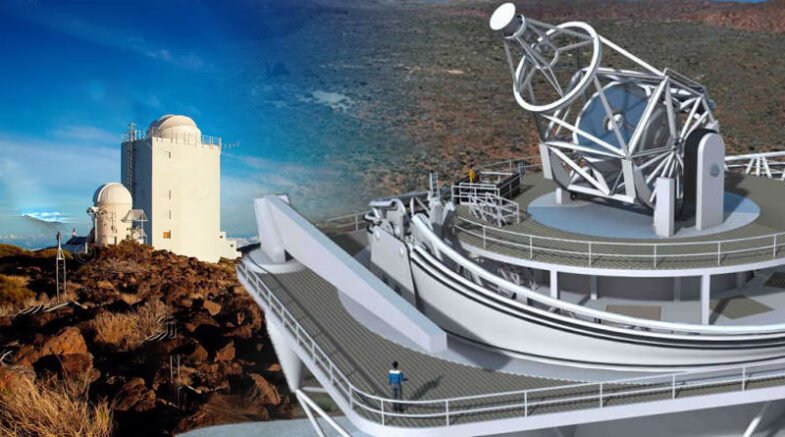The 1.50 metre mirror on the current European solar telescope serves as a comparison. The research we do to learn more about the sun is purely fundamental.

A group of scientists from 16 nations, including the University of Oslo, are working together to build a new solar telescope in the Canary Islands. The telescope, which will stand 44 metres tall, will be operational in 2029 and have a mirror with a diameter of 4.20 metres.
The 1.50 metre mirror on the current European solar telescope serves as a comparison. The research we do to learn more about the sun is purely fundamental.
However, other factors, such as solar storms, also have an impact on electronics and satellites. Mats Carlsson, a professor and the director of the Rosseland Centre for Solar Physics, says, “We’d like to understand what happens, particularly in the outer part of the sun.
Plasma makes up the sun. According to NASA, plasma is a gas-like state where charged detached particles called ions and electrons combine to form an extremely hot mixture. A magnetic field is produced when the charged particles move.
According to Carlsson, the phenomenon that the telescope is meant to observe is similar to a rubber band that is repeatedly twisted until it snaps and releases energy: “Movements inside the sun push around this magnetic field in such a way that energy is created.”
“You can capture beautiful images of the explosions, but it’s really challenging to gauge the magnetic field’s appearance. Especially higher up in the atmosphere, where things are happening, that requires very high accuracy, he says. Europe has come together on the plans for the European Solar Telescope (EST).
The telescope needs to be large enough to collect enough light particles to be accurate, and all countries have different ways of allocating money for projects like this. Spain is the only country that has given the final go ahead to grant funding, and the telescope will be built on La Palma.
Spain will be responsible for 25% of the project, with Norway contributing 5%. Norway submitted an application two years ago, but the Research Council of Norway believed the project wasn’t ready for funding. The entire project is estimated to come to 200 million euros, of which Norway is to finance 5%.
Carlsson believes that Norway is ahead in analysing large amounts of data, and the Rosseland Centre will be able to contribute to this area.
Building a telescope in space is expensive, so it is important to have good ground telescopes to complement space telescopes. Pål Brekke is a senior advisor for space science at the Norwegian Space Centre, and works with the other type of telescopes.
Ground telescopes can be built much larger than space telescopes, allowing them to correct for atmospheric disturbances. It is important to have good ground-based telescopes to complement space telescopes, according to Pål Brekke at the Norwegian Space Centre.
What space telescopes can do that ground-based telescopes cannot is show the wavelengths that never reach the ground. Ultraviolet rays and X-rays are among the wavelengths that the atmosphere protects against.
Carlsson and his group are world leaders in modelling the sun to understand the physics and explain the images. Norway is the best in the world at this.
